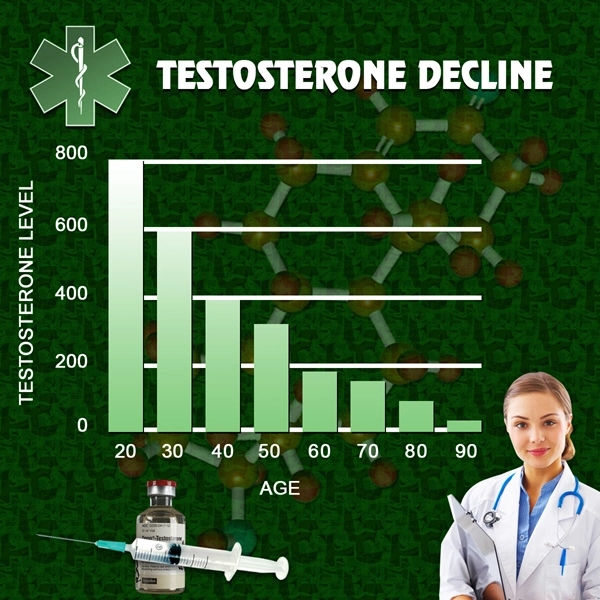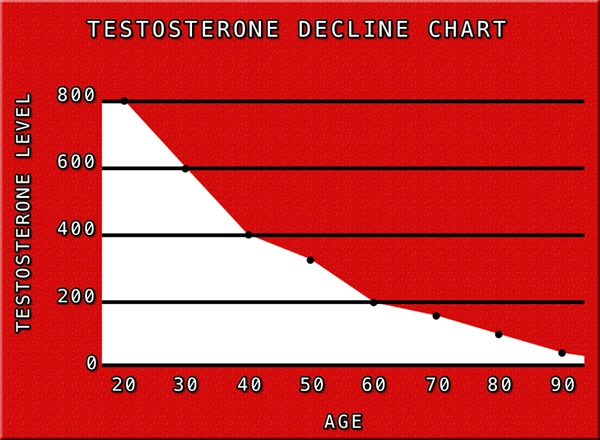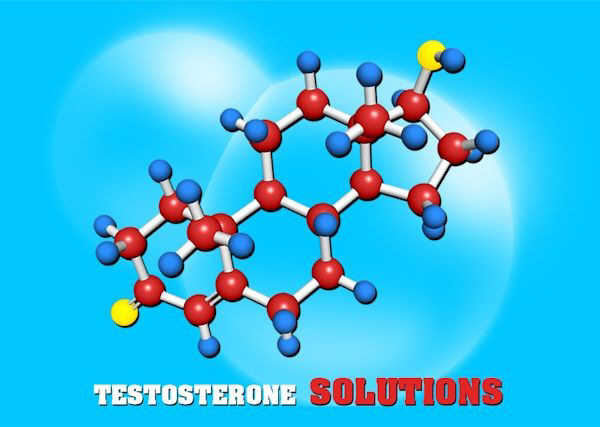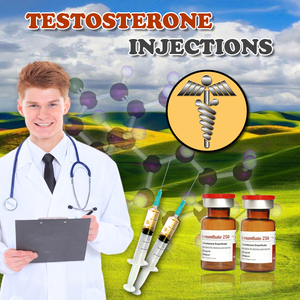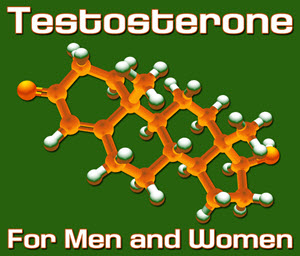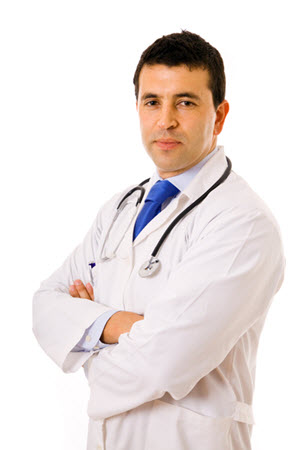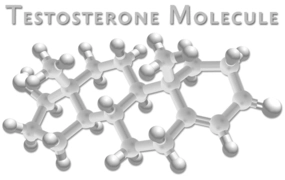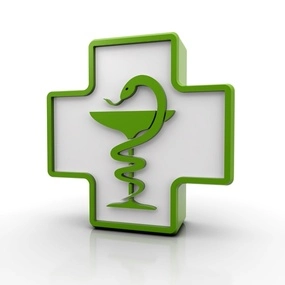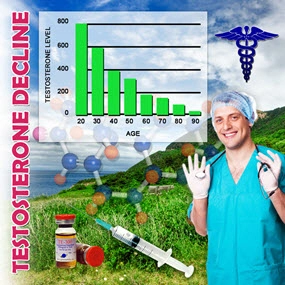by Bill Roberts Testosterone, as the natural product drug and one of the most widely used anabolic steroids, is the most convenient choice for a reference drug to which all others will be compared. And while it is entirely possible to construct maximally-effective steroid cycles without employing testosterone, most do not do this, but instead use testosterone as their foundation. Either approach can be entirely sound.
As a bodybuilding drug, testosterone is almost always used as an injectable ester, due to poor oral bioavailability and the impracticality of high dose transdermal or sublingual delivery. Testosterone also is provided as an injectable suspension. Discussion here is in reference to these injectable preparations.
Pharmacologically, testosterone acts both via the androgen receptor and via other means. In practice, it is found to combine synergistically both with those anabolic steroids categorized as Class I and those categorized as Class II, and therefore is described as having mixed activity.
Particular properties of testosterone that are of note include that it converts enzymatically both to dihydrotestosterone (DHT) and to estradiol (the most important of the estrogens.)
While with normal levels of testosterone and normal enzyme activity these conversions are in fact desirable, with supraphysiological testosterone levels caused by drug administration they can be undesirable. DHT is at least three times more potent (effective per milligram) than testosterone at the androgen receptor (AR): therefore, in those tissues which convert testosterone to DHT, there is effectively three times as much androgen as elsewhere in the body. Thus, whatever level of androgen is experienced by the muscle tissue is effectively multiplied threefold or more in the skin and in the prostate. This can be excessive.
Dutasteride (Avodart) can be used to keep DHT levels normalized despite heavy testosterone use. Most users do not do this out of concern for excessively reducing DHT, which may be a valid concern at full label dosing, but which I do not think is a concern with low-dose use ( tab every other day) in the context of a high-dose testosterone cycle.
Finasteride (Proscar) may be employed instead, if one wishes to use a 5alpha-reductase inhibitor. In this case, in the context of a high-dose testosterone cycle, one tab (5 mg) of this drug per day is unlikely to excessively decrease DHT.
Excess conversion to estrogen is another undesirable occurrence since it contributes to inhibition of the hypothalamic/pituitary/testicular axis (HPTA), can cause or aggravate gynecomastia, can cause bloating, and can give unfavorable fat pattern distribution. This conversion can be controlled by use of aromatase inhibitors such as Arimidex or letrozole, and/or the effects of excess estradiol may be blocked in relevant tissues by Clomid or Nolvadex.
Among the most significant differences of synthetic anabolic steroids compared to testosterone is that they may avoid either or both of these enzymatic conversions. In the past, this was a very important advantage. However, now that these conversions can be well-controlled, high-dose testosterone need not have all the adverse side effects that once inevitably accompanied its use.
Testosterone used as the sole androgen is capable of giving very effective results, particularly with doses of one gram or more per week, and can give substantial results with only 500 mg/week. If no other drugs are used to control estrogen, however, side effects such as gynecomastia are fairly likely. Prostate enlargement, acne or worsening of acne, and acceleration of male pattern baldness (for those genetically susceptible to it) are more problematic with testosterone again, in the absence of enzymatic control than with many synthetics because of the effectively-higher androgen levels seen in these tissues as a result of local conversion to the more-potent DHT.
So, to minimize these effects, the choices for a highly-effective cycle that is low in side effects are to either control these enzymatic conversions with ancillary compounds while using testosterone at high dose; to instead use synthetics which do not undergo these conversions; or to combine moderate dose testosterone (100-200 mg/week) with synthetics.
An anti-aromatase is preferable in a testosterone cycle to a selective estrogen receptor modulator (SERM) such as Clomid or Nolvadex for controlling estrogen because the SERMs either do nothing towards reducing effect of elevated estrogen in aggravating or causing acne, or themselves contribute adversely. Additionally, abnormally elevated estrogen levels may be deleterious for other reasons.
With regard to inhibition of the hypothalamic/pituitary/testicular axis (HPTA), 200 mg/week of injected testosterone is approximately 2/3 to 3./4 suppressive, while 100 mg/week is about 50% suppressive. For this reason, low dose testosterone use is not particularly efficient, as natural production is already worth 100-200 mg/week, and this is mostly lost with the first 200 mg/week of injectable that is used. The particular synthetics which are low-suppressive are, for this reason, more efficient for low-dose use than is testosterone.
In terms of planning HPTA recovery after a cycle, for the above reason there is little point in beginning post-cycle therapy (PCT) until testosterone levels from the cycle have fallen to being commensurate with use of no more than about 200 mg/week. So for example, if using 800 mg/week, it would be advisable to wait two half-lives. (After a number of days equal to the half life, levels will drop to that commensurate with 400 mg/week use, and after that same number of days again levels will again fall in half, now to levels to commensurate with 200 mg/week use.) So for example if the half-life of the ester used were 5 days, one would wait till 10 days after the last injection to begin PCT, when the drug in question is testosterone, due to the particulars of its suppressive properties.
With use of an anti-aromatase, 600-750 mg/week of injected testosterone is a good dosage range for a novice. Without an anti-aromatase, it may be preferred to limit usage to 500 mg/week, although there can be risk of gynecomastia at doses even as low as 200 mg/week if no anti-estrogen is used. More advanced users may favor a gram per week. Still-higher doses such as 2 grams per week generally provide only a small further increment in performance, with that generally being noticeable only if a plateau has been reached at 1 gram per week. Amounts higher than this are employed by some pro bodybuilders but probably with only a slight further incremental effect.
Originally posted here:
Testosterone - Steroids Profile
Contact Us Today For A Free Consultation

- Adverse Effects of Testosterone Therapy in Adult Men: A Systematic Review and Meta-Analysis [Last Updated On: July 2nd, 2024] [Originally Added On: June 4th, 2010]
- Low Testosterone Levels, Foods That Increase Testosterone Levels wwwSelf-Improvement-Bible.com [Last Updated On: November 12th, 2023] [Originally Added On: May 30th, 2011]
- Low Testosterone in Men: The Next Big Thing in Medicine! - Abraham Morgentaler, MD [Last Updated On: May 7th, 2023] [Originally Added On: June 3rd, 2011]
- How To Determine Testosterone Levels By Looking At Your Ring Finger [Last Updated On: December 7th, 2017] [Originally Added On: June 30th, 2011]
- Prolab Horny Goat Weed Testosterone Booster Supplement Review [Last Updated On: November 23rd, 2023] [Originally Added On: July 19th, 2011]
- The Healthy Skeptic: Products make testosterone claims [Last Updated On: August 13th, 2024] [Originally Added On: September 11th, 2011]
- How To Naturally Increase Testosterone [Last Updated On: November 21st, 2023] [Originally Added On: September 28th, 2011]
- Testosterone Production - Video [Last Updated On: November 25th, 2024] [Originally Added On: November 20th, 2011]
- Testosterone makes us less cooperative and more egocentric, study finds [Last Updated On: January 23rd, 2018] [Originally Added On: February 1st, 2012]
- Testosterone makes us less cooperative and more egocentric [Last Updated On: January 24th, 2018] [Originally Added On: February 1st, 2012]
- Too much testosterone makes for bad decisions, tests show [Last Updated On: April 30th, 2025] [Originally Added On: February 1st, 2012]
- Today in Research: Testosterone's Negative Effects; Diet Soda Death [Last Updated On: January 2nd, 2018] [Originally Added On: February 2nd, 2012]
- Testosterone drives ego, trips cooperation [Last Updated On: December 2nd, 2017] [Originally Added On: February 4th, 2012]
- FDA approves BioSante/Teva's testosterone gel [Last Updated On: April 28th, 2025] [Originally Added On: February 15th, 2012]
- 'Manly' Fingers Make For Strong Jawline in Young Boys [Last Updated On: December 1st, 2017] [Originally Added On: February 15th, 2012]
- Teva, BioSante Win U.S. Approval for Testosterone Therapy [Last Updated On: December 10th, 2017] [Originally Added On: February 15th, 2012]
- BioSante Gains on Approval of Testosterone Gel: Chicago Mover [Last Updated On: January 8th, 2018] [Originally Added On: February 16th, 2012]
- BioSante soars following drug approval from FDA [Last Updated On: December 26th, 2017] [Originally Added On: February 16th, 2012]
- Antibodies, Not Hard Bodies: The Real Reason Women Drool Over Brad Pitt [Last Updated On: December 24th, 2017] [Originally Added On: February 21st, 2012]
- Almark Publishing Releases Book From Mark Rosenberg, M.D. Revealing Natural Discoveries Associated With Low ... [Last Updated On: May 3rd, 2025] [Originally Added On: February 28th, 2012]
- Testosterone Replacement Clinic Comes to Kansas City with Potential to Help Thousands of Men [Last Updated On: May 2nd, 2025] [Originally Added On: March 1st, 2012]
- Study examines the relative roles of testosterone and its metabolite, dihydrotestosterone in men [Last Updated On: December 2nd, 2017] [Originally Added On: March 7th, 2012]
- The Role of 5{alpha}-Reductase Inhibition in Men Receiving Testosterone Replacement Therapy [Editorial] [Last Updated On: December 21st, 2017] [Originally Added On: March 7th, 2012]
- Effect of Testosterone Supplementation With and Without a Dual 5{alpha}-Reductase Inhibitor on Fat-Free Mass in Men ... [Last Updated On: January 3rd, 2018] [Originally Added On: March 7th, 2012]
- Why We Like Men Who Can Keep Their Cool [Last Updated On: December 30th, 2017] [Originally Added On: March 7th, 2012]
- Testosterone And Heart Health [Last Updated On: May 1st, 2025] [Originally Added On: March 10th, 2012]
- Your Life on Testosterone: Overly Sure of Yourself, Unwilling to Listen [Last Updated On: November 25th, 2018] [Originally Added On: March 15th, 2012]
- Mayo Clinic-TGen study role testosterone may play in triple negative breast cancer [Last Updated On: December 8th, 2017] [Originally Added On: March 23rd, 2012]
- A dose of testosterone might not cure what ails you [Last Updated On: January 23rd, 2018] [Originally Added On: March 25th, 2012]
- Green tea could aid athletes hide testosterone doping [Last Updated On: December 16th, 2017] [Originally Added On: March 25th, 2012]
- TGen Study Role Testosterone May Play in Triple Negative Breast Cancer [Last Updated On: December 6th, 2017] [Originally Added On: March 26th, 2012]
- Testosterone low, but responsive to competition, in Amazonian tribe [Last Updated On: January 23rd, 2018] [Originally Added On: March 28th, 2012]
- Competition-linked bursts of testosterone are fundamental aspect of human biology, study of Amazonian tribe suggests [Last Updated On: December 25th, 2017] [Originally Added On: March 28th, 2012]
- Playing football boosts testosterone levels by 30 percent! [Last Updated On: February 4th, 2024] [Originally Added On: March 28th, 2012]
- Testosterone low, but responsive to competition, in Amazonian tribe -- with slideshow [Last Updated On: December 9th, 2017] [Originally Added On: March 28th, 2012]
- The benefits of testosterone pellet therapy [Last Updated On: January 24th, 2018] [Originally Added On: March 29th, 2012]
- Low testosterone levels cause health woes [Last Updated On: November 25th, 2018] [Originally Added On: March 30th, 2012]
- Heart Failure Patients Getting Relief from Testosterone Supplements [Last Updated On: May 5th, 2025] [Originally Added On: April 21st, 2012]
- Study Finds Fatherhood Suppresses Testosterone [Last Updated On: May 4th, 2025] [Originally Added On: May 3rd, 2012]
- Low testosterone levels could raise diabetes risk for men [Last Updated On: January 26th, 2018] [Originally Added On: May 5th, 2012]
- Why low testosterone may increase your risk of diabetes [Last Updated On: November 25th, 2024] [Originally Added On: May 5th, 2012]
- Diabetes link to low testosterone [Last Updated On: November 25th, 2024] [Originally Added On: May 5th, 2012]
- Testosterone Linked to Weight Loss in Obese Men [Last Updated On: January 2nd, 2018] [Originally Added On: May 11th, 2012]
- Testosterone may help weight loss [Last Updated On: November 25th, 2024] [Originally Added On: May 11th, 2012]
- Testosterone-fuelled infantile males might be a product of Mom's behaviour [Last Updated On: December 25th, 2017] [Originally Added On: May 11th, 2012]
- Testosterone-fueled infantile males might be a product of Mom's behavior [Last Updated On: January 6th, 2018] [Originally Added On: May 11th, 2012]
- Testosterone supplements may help obese men lose weight [Last Updated On: January 5th, 2018] [Originally Added On: May 11th, 2012]
- Testosterone supplements 'can help men lose their middle-aged spread' [Last Updated On: November 25th, 2024] [Originally Added On: May 12th, 2012]
- Some doctors question safety of testosterone replacement therapy [Last Updated On: January 20th, 2018] [Originally Added On: May 15th, 2012]
- Health Canada Approves New Testosterone Topical Solution for Men [Last Updated On: May 15th, 2025] [Originally Added On: May 15th, 2012]
- Environment trumps genes in testosterone levels, study finds [Last Updated On: May 8th, 2025] [Originally Added On: May 15th, 2012]
- Global Testosterone Replacement Therapy (TRT) Industry [Last Updated On: May 7th, 2025] [Originally Added On: May 21st, 2012]
- Testosterone Fuels Boom, Swindler Sows Panic: Top Business Books [Last Updated On: January 13th, 2018] [Originally Added On: June 2nd, 2012]
- Increase in testosterone drug use [Last Updated On: April 12th, 2018] [Originally Added On: June 4th, 2012]
- Testosterone Promotes Agression Automatically [Last Updated On: January 29th, 2018] [Originally Added On: June 9th, 2012]
- Testosterone shown to help sexually frustrated women [Last Updated On: January 27th, 2018] [Originally Added On: June 9th, 2012]
- Research and Markets: Testosterone Replacement Therapy (TRT) - Global Strategic Business Report [Last Updated On: December 23rd, 2017] [Originally Added On: June 12th, 2012]
- Proposed testosterone testing of some female olympians challenged by Stanford scientists [Last Updated On: January 30th, 2018] [Originally Added On: June 14th, 2012]
- Testosterone Makes Bosses Into Jerks, Says Paul Zak [Last Updated On: January 8th, 2018] [Originally Added On: June 14th, 2012]
- Testosterone Therapy: A Misguided Approach to Erectile Dysfunction (ED) [Last Updated On: May 10th, 2025] [Originally Added On: June 20th, 2012]
- New drugs, new ways to target androgens in prostate cancer therapy [Last Updated On: January 8th, 2018] [Originally Added On: June 20th, 2012]
- Long-term testosterone treatment for men results in reduced weight and waist size [Last Updated On: January 19th, 2018] [Originally Added On: June 23rd, 2012]
- Declining testosterone levels in men not part of normal aging, study finds [Last Updated On: December 27th, 2017] [Originally Added On: June 23rd, 2012]
- Low testosterone not normal part of aging [Last Updated On: December 22nd, 2017] [Originally Added On: June 25th, 2012]
- Testosterone Does Not Necessarily Wane With Age [Last Updated On: December 6th, 2017] [Originally Added On: June 25th, 2012]
- Overweight men can boost low testosterone levels by losing weight [Last Updated On: December 10th, 2017] [Originally Added On: June 25th, 2012]
- Testosterone-replacement therapy improves symptoms of metabolic syndrome [Last Updated On: January 14th, 2018] [Originally Added On: June 26th, 2012]
- Testosterone therapy takes off pounds [Last Updated On: December 11th, 2017] [Originally Added On: June 26th, 2012]
- Weight loss may boost men's testosterone [Last Updated On: May 9th, 2025] [Originally Added On: June 27th, 2012]
- Low Testosterone? Study finds age may not be to blame [Last Updated On: May 12th, 2025] [Originally Added On: July 1st, 2012]
- Do you have low testosterone? [Last Updated On: December 15th, 2017] [Originally Added On: July 8th, 2012]
- Wall Streeters Buying Testosterone for an Edge [Last Updated On: May 11th, 2025] [Originally Added On: July 12th, 2012]
- Beefy Wall Street Traders rub on testosterone [Last Updated On: February 20th, 2024] [Originally Added On: July 12th, 2012]
- Tale of two runners exposes flawed Olympic thinking [Last Updated On: December 23rd, 2024] [Originally Added On: July 19th, 2012]
- Genetic markers for testosterone and estrogen level regulation identified [Last Updated On: January 6th, 2018] [Originally Added On: July 20th, 2012]
- BUSM researchers identify genetic markers for testosterone, estrogen level regulation [Last Updated On: December 18th, 2017] [Originally Added On: July 20th, 2012]
- DRS. OZ AND ROIZEN: How to reap the benefits of normal testosterone levels [Last Updated On: December 23rd, 2024] [Originally Added On: July 21st, 2012]
- How Testosterone Drives History [Last Updated On: December 24th, 2024] [Originally Added On: July 22nd, 2012]
- Testosterone replacement is "fountain of youth" for men [Last Updated On: January 3rd, 2018] [Originally Added On: July 27th, 2012]
- Pill for low testosterone in men heads for phase II clinical trials [Last Updated On: December 31st, 2017] [Originally Added On: August 2nd, 2012]
Word Count: 1051

